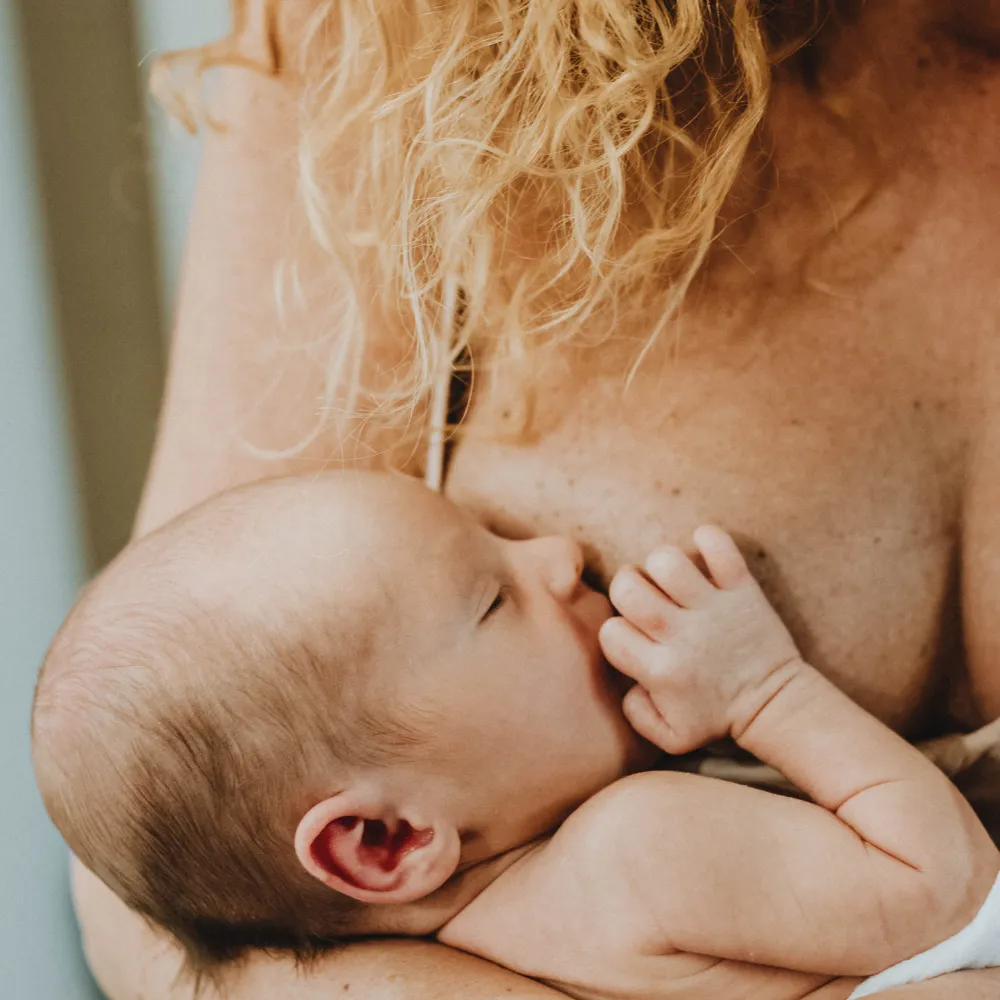Getting Pregnant While Breastfeeding - Is It Possible?
To make an informed decision, it's important to understand how breastfeeding can impact fertility and what other options are available.

Many new mothers wonder about the possibility of getting pregnant while breastfeeding. While some mothers may want to conceive again soon, others may prefer to wait a while.
Could breastfeeding alone be a form of contraception during nursing? To make an informed decision, it's important to understand how breastfeeding can impact fertility and what other options are available.
What Is Lactational Amenorrhea?
When a woman breastfeeds, it can lead to the production of more of the hormone prolactin, which helps prepare the breasts for feeding and can also stop ovulation from occurring - this is called Lactational amenorrhea.
The lactational amenorrhea method (LAM) is a natural way of preventing pregnancy after giving birth. This method has a high success rate, but it's essential to be aware of the risk of getting pregnant while breastfeeding. Breastfeeding does not always provide 100% protection against pregnancy.
Duration of Infertility
It's also difficult to determine the exact duration of infertility while breastfeeding as it can vary among individuals. According to the World Health Organization (WHO), a breastfeeding mother can have her first ovulation as early as three months after giving birth, while a non-breastfeeding mother can have her first ovulation as early as three weeks after giving birth.
If you're considering getting pregnant while breastfeeding, here is an article on how to increase fertility while breastfeeding.

The Tushbaby Hip Carrier
With its ergonomic design and comfortable waistband, Tushbaby provides optimal support for you and your baby. Say goodbye to shoulder and back pain from traditional carriers, as Tushbaby evenly distributes your baby's weight, relieving strain and promoting better posture.
How to Encourage LAM and Delay Fertility
- Exclusive breastfeeding: Breastfeeding exclusively, meaning that the baby is only fed breast milk and no other food or fluids, can suppress ovulation and delay fertility.
- Frequent breastfeeding: Breastfeeding frequently, including at night, can help suppress ovulation.
- Avoiding supplementary feeding: Supplementing breast milk with formula or other foods can reduce the effectiveness of LAM, so it's best to avoid supplemental feeding as much as possible. This is why LAM is only really effective up until six months because, at this stage, babies are usually started on solids.
- Encourage skin-to-skin contact, kangaroo care, and comfort nursing.
Breastfeeding can be an effective form of birth control, but it's important to be aware that getting pregnant while breastfeeding is still possible.

Birth Control Options for Breastfeeding Mothers
- Progestin-only hormonal methods, such as the mini-pill or the hormone-releasing intrauterine device (IUD), do not contain estrogen and are considered safe for breastfeeding mothers. They do not affect milk production or the baby's health.
- Barrier methods, such as condoms, diaphragms, or cervical caps, are physical methods that physically block the sperm from reaching the egg.
- Copper-releasing IUD is a long-acting, highly effective method of contraception that a healthcare provider can insert after childbirth.
- The fertility awareness method, also known as natural family planning, involves monitoring the signs of fertility, such as basal body temperature, cervical mucus, or ovulation predictor kits, to determine the fertile days of the cycle. It requires commitment and discipline to use correctly.
Risk Factors for Pregnancy
- Return of menstruation: The return of menstruation is a sign that lactational amenorrhea is no longer effective, increasing the chance of getting pregnant while breastfeeding. Although, many women are surprised to learn that they can get pregnant while breastfeeding, despite not having a period. So, fertility can return before you have your first postpartum period.
- Time since childbirth: LAM is only effective within the first six months postpartum. The baby will no longer be fed exclusively with breastmilk, which means breastfeeding will occur less frequently.
- Infrequent breastfeeding: LAM may not be effective if breastfeeding is not frequent enough.
- Night-time breastfeeding: Night-time breastfeeding is important to the effectiveness of LAM.
- The interval between feedings: If the gaps between feedings are more than 4 hours during the day and 6 hours at night, the suppressive effect on ovulation is reduced.
- Supplementing with formula or other food: If the baby is fed with formula or other food in addition to breastmilk, the suppressive effect on ovulation is reduced.
As soon as one of the risk factors for pregnancy appears, reliable contraceptive measures should be started to avoid an unplanned pregnancy.
Conclusion
In conclusion, while breastfeeding can be an effective method of birth control, it's important to remember that it's not foolproof, and pregnancy can occur while breastfeeding. Pay attention to the frequency and duration of breastfeeding and consult with a healthcare provider to determine the best contraception option that suits your needs.

